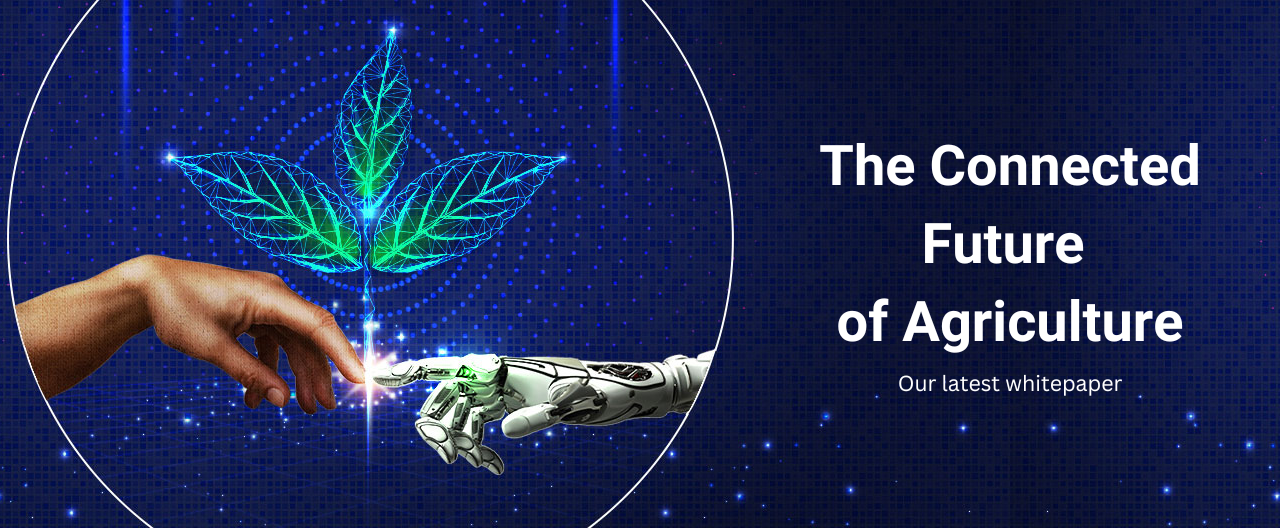
Harvest the Benefits of a Connected Future: Revolutionize Agriculture with Technology
The global Agtech market is set to grow at a CAGR of 10.80% between 2021 and 2030. Of this Agtech-as-a-service segment, is pegged to grow twice as rapidly at a CAGR of 24.42% between 2022 and 2026 alone to USD 36.4 billion.
But what does this truly mean ?
'The Connected Future of Agriculture' whitepaper breaks down the most pressing issues affecting this sector due to the lack of digitalisation and provides insights into solving them.
Here are some of the areas this whitepaper aims to address :
- Improving Farmer Engagement to facilitate higher yield per acre
- Increasing yield volume and quality that is impacted by climate change by driving Farmer resilience with Climate Smart Agriculture
- Empowering farmer with inclusive financing
- Enhancing Food Security to meet the estimated growth in food demand by 70% to 100% by 2050
- Ensuring Food Integrity and Nutrition for a growing population, especially the most marginalised and vulnerable communities
- Reducing Food Wastage by bringing in traceability, transparency, and accountability
- Enabling end-to-end visibility that will result in improved customer satisfaction
Complete this form to access the eBook
The global Agtech market is set to grow at a CAGR of 10.80% between 2021 and 2030. Of this Agtech-as-a-service segment, is pegged to grow twice as rapidly at a CAGR of 24.42% between 2022 and 2026 alone to USD 36.4 billion.
But what does this truly mean ?
'The Connected Future of Agriculture' whitepaper breaks down the most pressing issues affecting this sector due to the lack of digitalisation and provides insights into solving them.
Here are some of the areas this whitepaper aims to address :
- Improving Farmer Engagement to facilitate higher yield per acre
- Increasing yield volume and quality that is impacted by climate change by driving Farmer resilience with Climate Smart Agriculture
- Empowering farmer with inclusive financing
- Enhancing Food Security to meet the estimated growth in food demand by 70% to 100% by 2050
- Ensuring Food Integrity and Nutrition for a growing population, especially the most marginalised and vulnerable communities
- Reducing Food Wastage by bringing in traceability, transparency, and accountability
- Enabling end-to-end visibility that will result in improved customer satisfaction
